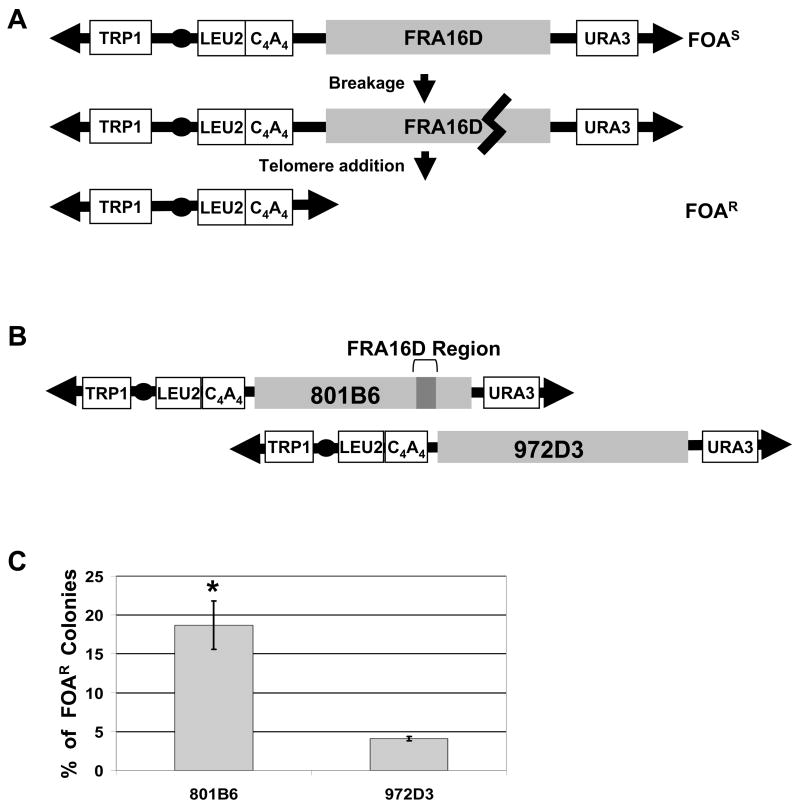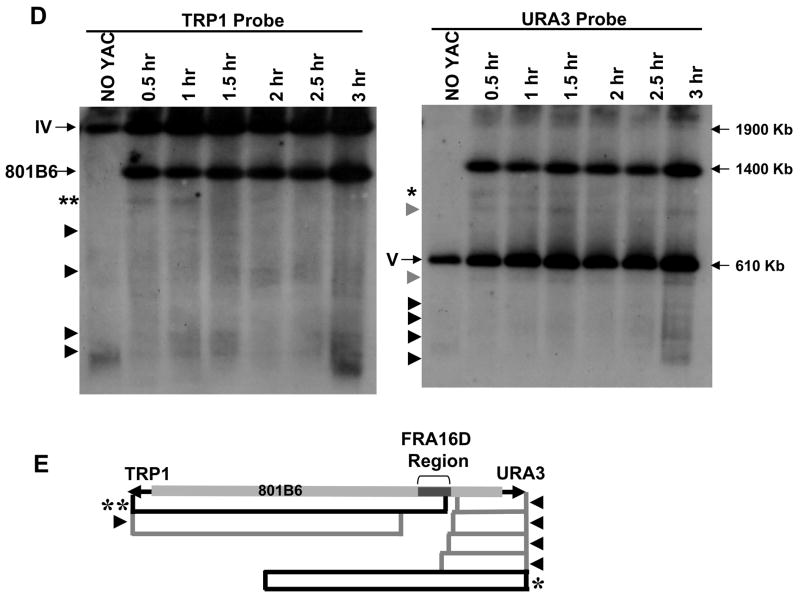Figure 1. Assays to quantify FRA16D fragility and map sites of breakage.
(A) The YAC breakage assay. Cells containing a YAC, which contains either the entire FRA16D region or subregions and the URA3 gene, are FOAS. When breakage occurs inside the FRA16D region (heavy black line), the broken YAC can be rescued by the addition of a new telomere to the 108 bp C4A4 telomere seed sequence. The resulting cells will be Leu+, Trp+ and FOAR. (B) YACs from the CEPH YAC library were modified by adding a telomere seed sequence and a LEU2 marker. Human sequences are represented by grey boxes (not to scale). The dark grey box represents the 270 kb FRA16D region defined as most fragile by (Reid et al., 2000). YAC 801B6 and YAC 972D3 are aligned according to their coordinates in the human genome. (C) The breakage assay was performed for YAC 801B6 and YAC 972D3. Bars represent the average of 3 experiments, SEM is shown. Statistical significance was determined using a pooled variant t-test, * P < 0.05. (D) Breakage intermediates initiate within FRA16D. Cells of the rad50Δ strain background containing the 801B6 YAC from the CEPH YAC library were arrested in G1, released into S phase, and samples collected every 30 min for 3 hours. Chromosomes were prepared and separated using PFGE, blotted, and hybridized to either a TRP1 or a URA3 probe to the left or right arm of the YACs, respectively. The endogenous chromosome IV (Containing TRP1) and V (containing URA3) and full length YAC 801B6 are indicated by long arrows. Initial breakage intermediates are indicated by asterisks (** or *), degradation products by black arrowheads, putative recombination products by grey arrowheads. (E) Mapping of the breakage intermediates, symbols as in (D). The diagram of YAC 801B6 is approximately to scale.


